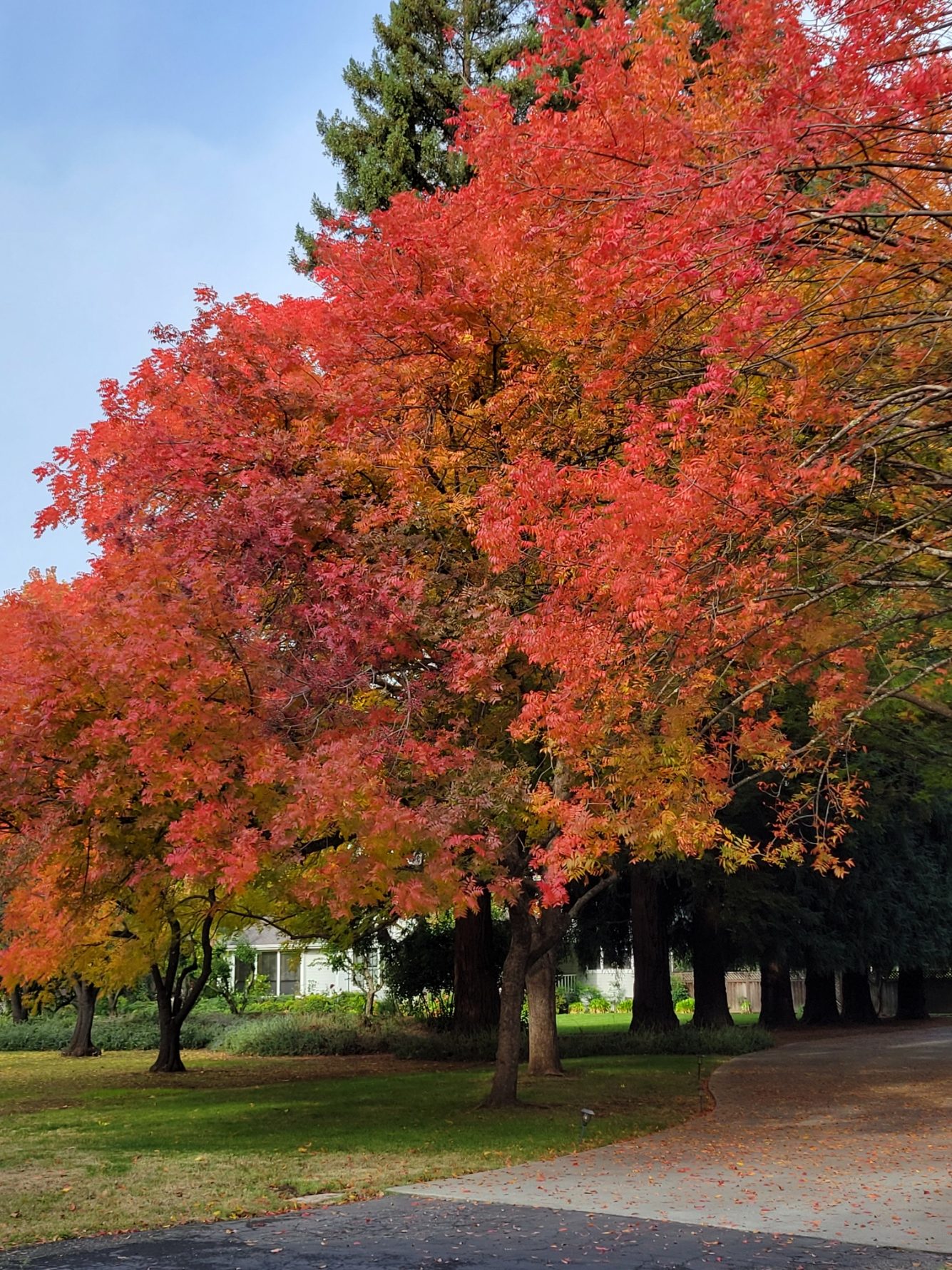Education
Discover the Science Behind Autumn’s Vibrant Leaf Colors

As autumn unfolds in Butte County, California, residents are treated to a stunning display of foliage, showcasing deep reds, oranges, and yellows. This vibrant transformation occurs as deciduous trees prepare for winter, but the intensity of the colors can vary significantly each year. Understanding the science behind these changes reveals how trees respond to environmental conditions.
Photosynthesis and the Change of Seasons
During the long summer days, trees engage in photosynthesis, a process where leaves utilize sunlight, water, and carbon dioxide to produce sugars that nourish the tree. The green pigment chlorophyll plays a crucial role in this process, absorbing light energy. As autumn approaches and days shorten, trees begin to reduce chlorophyll production, leading to a slowdown in photosynthesis.
This reduction allows other pigments, namely carotenoids, to become visible. Carotenoids, which produce the yellow and orange hues, are consistently present in leaves and do not fluctuate based on weather conditions. In some species, a pigment called anthocyanin is produced in the fall, creating the striking reds that enhance the autumn landscape.
Factors Influencing Autumn Foliage
According to the UC Master Gardeners of Butte County, several factors influence the timing and vibrancy of fall colors. A significant factor is the weather; a severe drought can delay the onset of autumn colors by several weeks. Conversely, a dry fall with warm, sunny days and cool nights can lead to particularly vivid foliage.
As temperatures drop, deciduous trees initiate the process of leaf drop through the development of abscission cells. Located where the leaf stem meets the branch, these microscopic cells respond to hormonal signals that prompt leaves to detach. If these cells fail to develop properly, leaves may remain attached long after other trees have shed theirs, resulting in prolonged periods of color.
Moreover, trees that retain their leaves during mild winter weather may attempt to continue photosynthesis. However, if cold temperatures return unexpectedly, water trapped in the leaves can freeze, potentially damaging the tree.
This year, the conditions in early October have been conducive to vibrant leaf colors, as warm days combined with cool, non-freezing nights allow for the production of sugars in leaves. If these sugars remain in the leaves overnight, they can lead to the formation of anthocyanins, which offer protection from excess sunlight and help trees recover nutrients.
As a result, residents can enjoy an impressive show of autumn colors, thanks to the unique weather patterns experienced this season.
For those interested in learning more about gardening and sustainable practices, the UC Master Gardeners are hosting a workshop on irrigation on November 17. This workshop is free, but registration is required. For more information and to register, visit the UC Master Gardeners of Butte County website.
The University of California Cooperative Extension system, which encompasses the Master Gardeners program, serves the community in various ways, including youth development through 4-H programs, agricultural advice, and nutrition education. For gardening assistance or questions, residents are encouraged to contact the hotline at 552-5812 or email [email protected].
As the season progresses, the display of autumn colors serves as a reminder of nature’s beauty and the intricate processes that govern the changing seasons.
-

 Technology5 months ago
Technology5 months agoDiscover the Top 10 Calorie Counting Apps of 2025
-

 Health3 months ago
Health3 months agoBella Hadid Shares Health Update After Treatment for Lyme Disease
-

 Health3 months ago
Health3 months agoErin Bates Shares Recovery Update Following Sepsis Complications
-

 Technology4 months ago
Technology4 months agoDiscover How to Reverse Image Search Using ChatGPT Effortlessly
-

 Technology1 month ago
Technology1 month agoDiscover 2025’s Top GPUs for Exceptional 4K Gaming Performance
-

 Technology3 months ago
Technology3 months agoElectric Moto Influencer Surronster Arrested in Tijuana
-

 Technology5 months ago
Technology5 months agoMeta Initiates $60B AI Data Center Expansion, Starting in Ohio
-

 Technology5 months ago
Technology5 months agoRecovering a Suspended TikTok Account: A Step-by-Step Guide
-

 Health4 months ago
Health4 months agoTested: Rab Firewall Mountain Jacket Survives Harsh Conditions
-

 Lifestyle5 months ago
Lifestyle5 months agoBelton Family Reunites After Daughter Survives Hill Country Floods
-

 Health3 months ago
Health3 months agoAnalysts Project Stronger Growth for Apple’s iPhone 17 Lineup
-

 Technology4 months ago
Technology4 months agoHarmonic Launches AI Chatbot App to Transform Mathematical Reasoning





















